from the September 22, 2018 Newsletter with notes from a camping trip to the north-central Yucatan coast between Río Lagartos and Las Coloradas, Yucatán, MÉXICO
QUEEN-OF-THE-NIGHT CACTUS AT THE BEACH
Earlier we've twice looked at what I assume to be the arboreal, wandering cactus Selenicereus grandiflorus, sometimes called Queen-of-the-night {following entries}. In one encounter I was unsure whether the plant had been placed there by someone, the other was in a chilly, high-elevation, borderline cloud forest, seemingly a habitat out of place for the species. During last week's camping trip to Yucatan's northern coast, sprawling atop the salt-spray-stunted scrub right behind the dunes a few meters inland from the beach, I found plenty of the species, clearly growing wild there. Below, you can see a typical part of a long, much-branched stem wandering atop a clutter of died-back shrubs:

Instead of green and slender like the ones profiled earlier growing in the shade, these stems were much more robust, and purplish, as seen below:
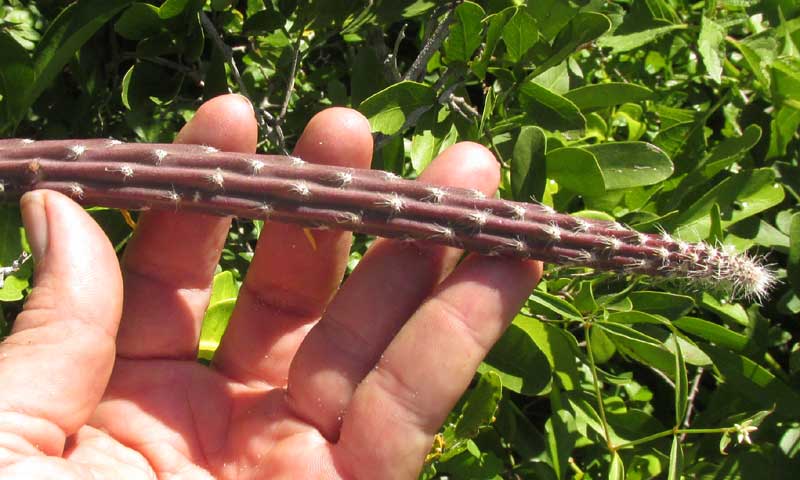
Plants exposed all day long to intense sunlight often develop reddish or purplish color, the pigments serving as a sunscreen. Despite those differences in appearance, the spines were just like those at the rancho, as seen below:
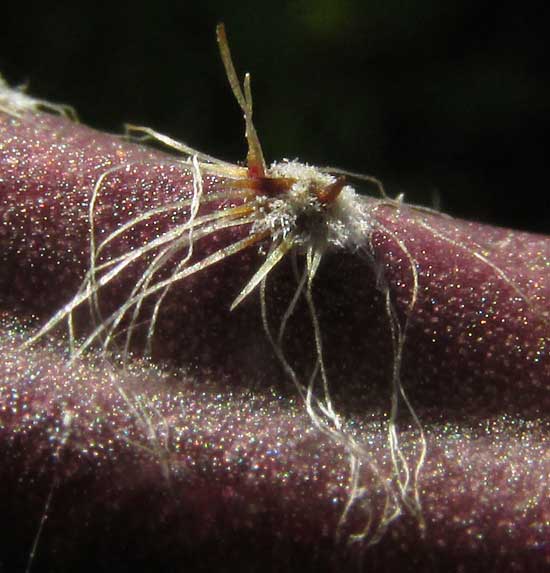
Whenever the stems dipped low, often they issued stout adventitious roots, which may have collected moisture during the heavy dews that drenched my tent each morning, and probably from fogs that sometimes roll in off the water. These are shown below:
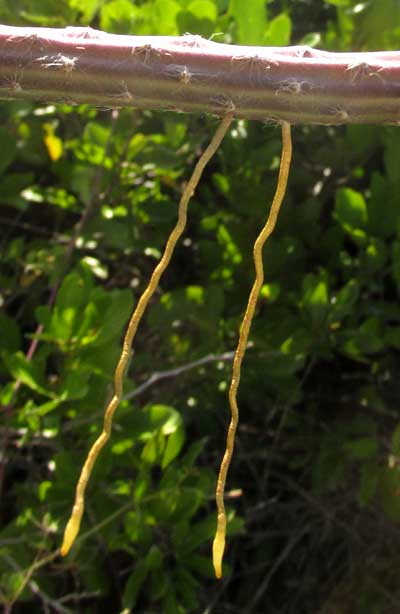
Taxonomy of the genus Selenicereus is notoriously confused and understudied, so the species name grandiflorus has to be seen as a placeholder until the group is better understood.
from the June 28, 2018 Newsletter issued from Rancho Regenesis in the woods ±4kms west of Ek Balam Ruins; elevation ~40m (~130 ft), N~20.876°, W~88.170°, central Yucatán, MÉXICO
QUEEN-OF-THE-NIGHT CACTUS
Right beside the rancho entry gate, which I pass each day, this week for the first time ever I noticed a slender little cactus growing along a tree's trunk, shown below:
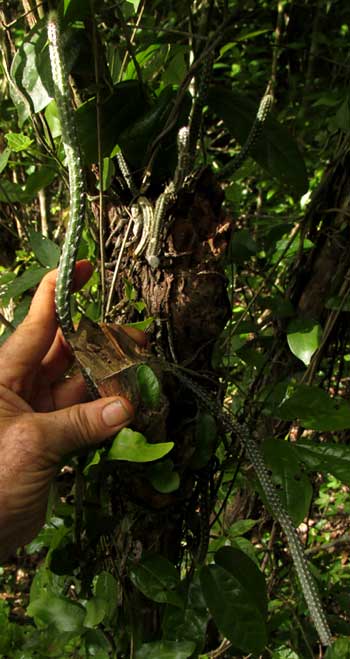
Though it was neither flowering nor fruiting, I knew it might be easy to identify because its spines were so unusual, as you can see below:
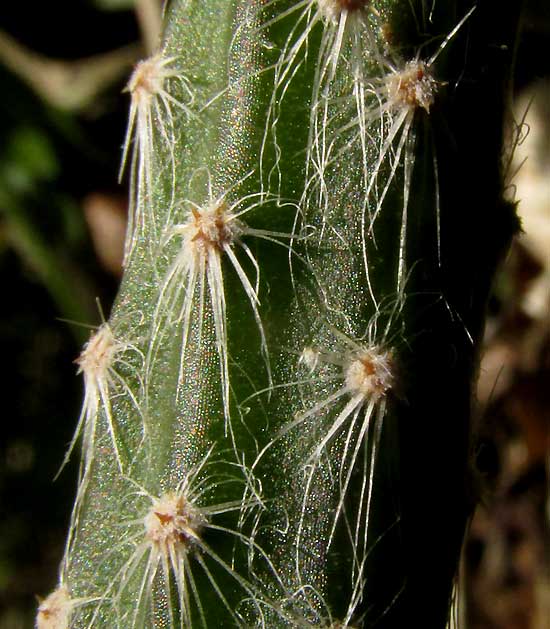
These are such unusual spines that I took the close-up shown below:
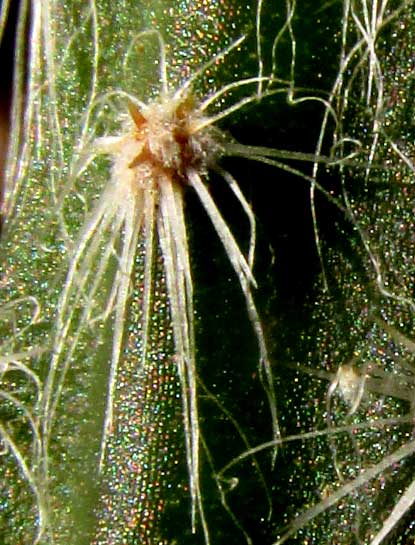
The spines are so soft and weak that eventually they're deciduous, plus they're mixed with long, whitish hairs adding to the droopy image.
And with such spines, it was indeed easy to get a name: It's what's sometimes called Queen-of-the-night, SELENICEREUS GRANDIFLORUS, distributed in much of Mexico south to Nicaragua, and the Caribbean area.
The grand name Queen-of-the-night is earned by the species' spectacular white flowers, up to a foot long (30cm). In fact, sometimes the species also is known as Night-blooming Cereus, though that name is shared by several species with big, white blossoms.
Despite the cactus looking like it's been in place for a long time, I'm uncertain as to whether our individual beside the gate grew there naturally, or whether years ago someone put it there. Theoretically the species can occur naturally here, but I've not seen it before in the Yucatan.